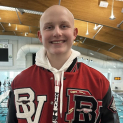Targeting and imaging immunometabolic vulnerabilities in diffuse midline glioma

Diffuse midline gliomas (DMGs) are one of the deadliest forms of childhood cancer. Most children with DMG die within a year of being diagnosed with the disease. Immunotherapy with anti-GD2 CAR T cells extended survival in mouse models and induced tumor shrinkage in a pilot study in DMG patients. However, tumors inevitably recurred and caused patient death, pointing to the need for strategies that enhance response to therapy.
The tumor mass is heavily infiltrated with innate immune cells called macrophages that suppress the cytotoxic capacity of T cells and reduce the effectiveness of CAR T cell therapy. Another significant hurdle in treating patients is the lack of clear biomarkers (biological molecules that are markers of disease) that tell us whether the tumor is responding to treatment. We need to develop new therapies that relieve immunosuppression caused by macrophages in DMGs. We also need imaging agents that physicians can use to assess if the children are responding to the treatment as soon as possible.
Project Goal:
Glucose metabolism affects the function of immune cells, including macrophages. Our studies indicate that DMGs secrete the chemokine CCL2, which upregulates glucose metabolism to lactate in tumor-associated macrophages. This effect is driven by an unusual metabolic enzyme called enolase 2 (ENO2) in macrophages. Lactate, in turn, drives molecular alterations that block CAR T cell cytotoxicity. Importantly, treating mouse models of DMG with a safe, brain-penetrant ENO2 inhibitor reduces macrophage burden, restores the tumor-killing capacity of CAR T cells, and causes tumor shrinkage. Furthermore, we have developed an imaging agent that non-invasively monitors ENO2 activity in macrophages and reports on response to therapy soon after treatment. We anticipate that successful completion of our studies will lay the foundation for clinical translation of this novel immunometabolic therapy and imaging strategy to children with DMGs.

